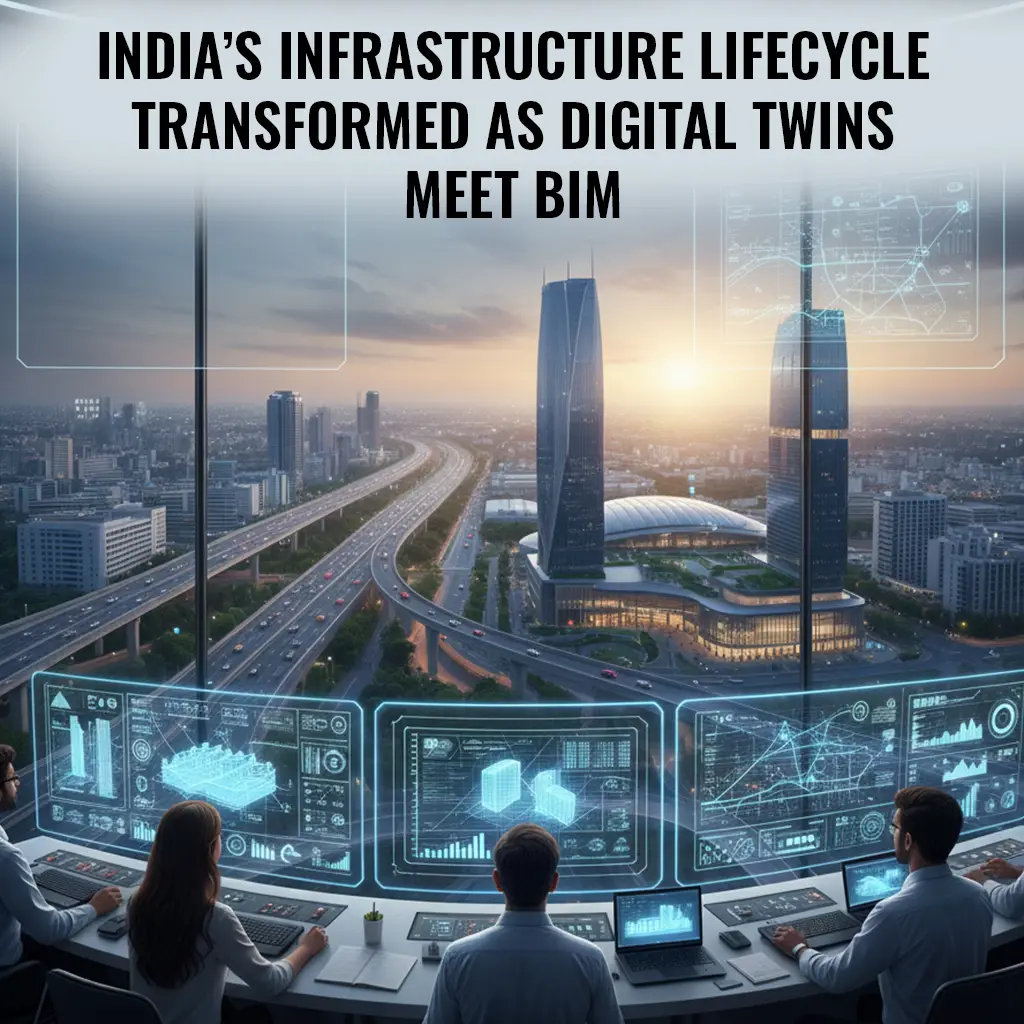Download Ready
Thanks for your interest! Your syllabus is now ready to download.

October 25, 2025
2 Min Read
India’s rapidly expanding infrastructure sector is increasingly turning to Digital Twin technology—integrated with BIM models, IoT sensors and cloud analytics—to shift from reactive maintenance to proactive asset-management. Unlike static BIM models, these Digital Twins form continuously updating virtual replicas of physical assets, enabling real-time monitoring, predictive maintenance and operational optimisation.
In urban transit stations, commercial towers and smart-city infrastructure projects across India, sensor data (such as vibration, temperature, occupancy and load-stress) is being fed into twin platforms. This enables engineers and operators to forecast faults, adjust systems in live time and optimise energy performance or structural health. In infrastructure corridors and expressways, the approach is helping to move from “build, handover and forget” towards full-lifecycle stewardship.
By enabling predictive maintenance, reducing downtime, improving sustainability performance and delivering richer handover data, Digital Twins are enhancing asset value and reducing lifecycle risk. For AEC firms and operators in India, this represents a shift: BIM is no longer just about design and construction—it is evolving to become a continuous operational tool.
Adoption is still constrained by issues such as upfront IoT and cloud-infrastructure investment, data interoperability between legacy systems and BIM workflows, and the availability of skilled professionals who can bridge engineering, data analytics and operations. As tenders begin to specify BIM Level 3, operational data handover and live-asset monitoring, firms that prepare early will gain advantage.
India’s infrastructure boom is providing fertile ground for the convergence of BIM, digital twins and live-asset data. For design-build-operate stakeholders, the message is clear: digital modelling must expand into operations if value is to be maximised. Firms that embed this mindset early will be best positioned in the next phase of AEC transformation.